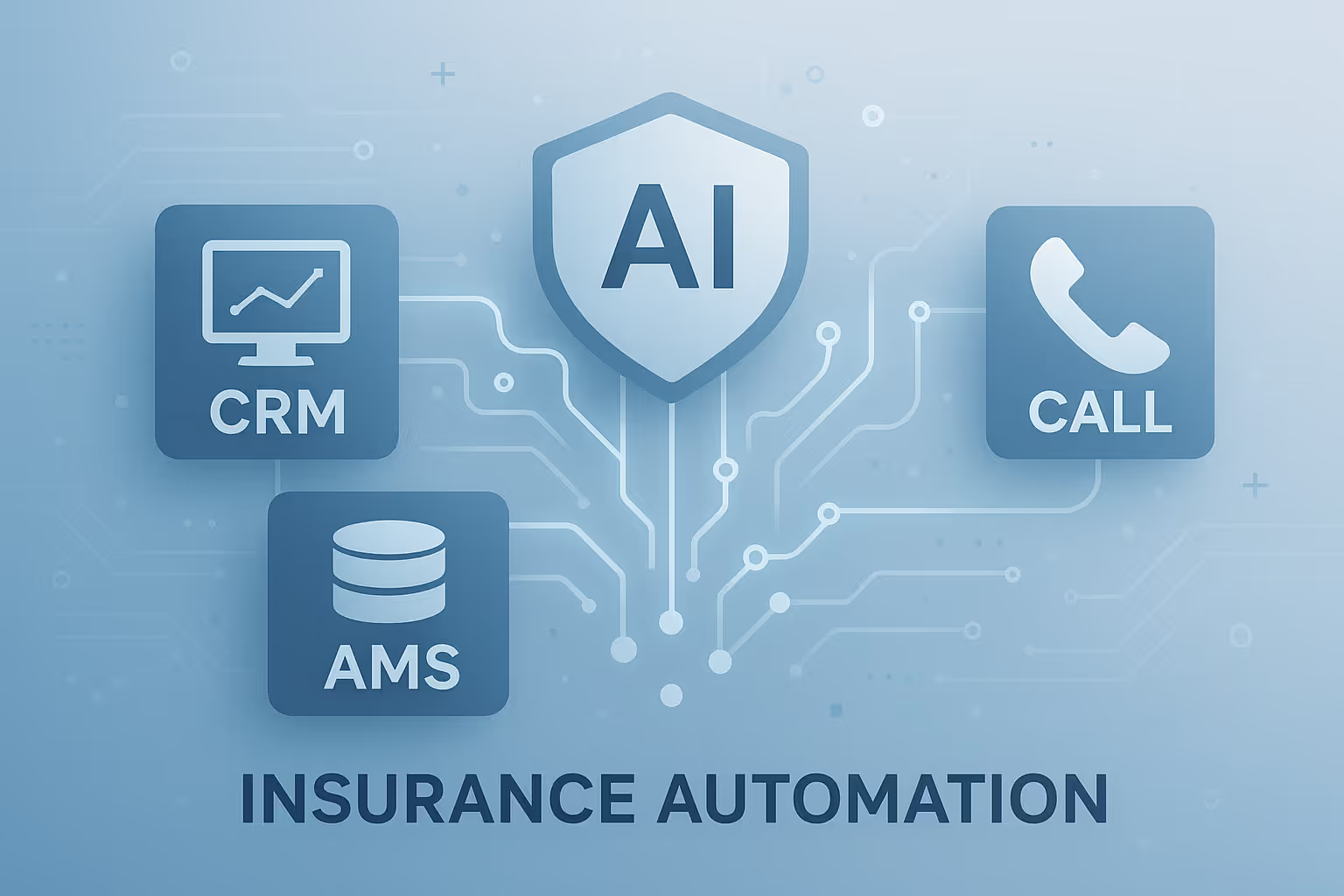Unleashing the Power of AI: Revolutionizing Insurance Operations with Seamless Integrations
In a world where immediate response and efficient service are the norms, the insurance industry stands at a critical juncture. As competitive pressures mount, insurers are exploring new avenues to redefine customer experiences and streamline their operations. The integration of AI-driven automation across Agency Management Systems (AMS), Customer Relationship Management (CRM) platforms, and call systems forms the backbone of this transformative journey, creating what is now being referred to as the Modern Insurance Automation Stack.
The Invisible Hand of AI in Insurance
The pressure to deliver immediate, personalized service has never been greater in the insurance landscape. Missed calls can lead to customer attrition, and lapses in compliance can result in costly penalties. At the same time, the burden of manual data entry and processing can hinder growth and efficiency. Here lies the inherent challenge: how do insurance providers balance the demand for speed with the need for accuracy and personalization?
Fluents: A New Paradigm in Automation
Through platforms like Fluents, AI dissolves these tensions by automating traditionally burdensome tasks. Imagine an AI voice agent that seamlessly handles inbound and outbound calls with sub-second response times. Gone are the days of clunky, static IVRs; instead, Fluents presents a dynamic interaction avenue where quoting, claims processes, and policy management unfold through natural, fluid conversations. The blending of Fluents’ capabilities with AMS automation AI voices and robust CRM integrations heralds a new era of operational fluidity.
Real-world Workflows: A Case in Seamless Integration
Consider a typical insurance workflow: a customer initiates a call to inquire about policy details. Traditionally, such interactions require significant manual intervention, but not so with integrated AI solutions. Picture this: a Fluents AI voice agent autonomously retrieves the caller's information from the CRM, confirms details through conversational AI, and records the interaction in the AMS. This process not only curtails time and human resource consumption but also elevates precision in customer service.
Integrating platforms like WellSky demonstrates further potential. Their insurance integration AI can coordinate care management with insurance providers, allowing for more comprehensive service offerings and streamlined back-office operations. These connections optimize the administrative processes, ensuring that compliance remains steadfast without inhibiting process flow.
Navigating the Ethical and Operational Dimensions
With these technological strides, ethical and operational considerations come to the fore. How these systems safeguard customer data and maintain compliance while delivering superior service is a question that the industry perpetually examines. Transparency and robust data security frameworks must underpin any AI-driven initiative, ensuring that trust is never compromised.
Furthermore, while AI excels in efficiency, blending human intuition with technological might offers a richer, more nuanced service experience. The future of insurance automation will likely see humans and AI working in partnership, each complementing the other's strengths.
A Glimpse Into the Future
As the insurance sector continues its evolution, AI integration appears less of a choice and more of an imperative. The blending of AMS, CRM, and call system capabilities with AI creates a cohesive ecosystem that can anticipate needs and respond with agility. As Fluents and other platforms demonstrate, the modern insurance automation stack is more than a technological marvel; it's a strategic pivot enhancing resilience and customer satisfaction.
Looking ahead, the possibilities within insurance automation are vast. Organizations that harness these AI-driven integrations effectively will not only stay ahead of the curve but will redefine the standards of insurance excellence. The future beckons, and with it, the promise of a more connected, efficient, and customer-centric insurance world.
From 10 calls a day to 85,000, Fluents scales with you. Automate globally, integrate deeply, and never worry about your call infrastructure again.

Stay Connected
Check out our latest updates, customer stories, and resources to keep leveling up with Fluents.
FAQs on AI in Insurance Automation
Find answers to common questions about AI in insurance automation, including system integration and operational efficiency.
AI integration in insurance operations significantly elevates customer experience by enabling swift, personalized interactions. Traditional manual processes often slow down service delivery and heighten the risk of errors; however, AI-driven solutions like Fluents effectively address these concerns. By automating tasks such as data retrieval and entry, companies efficiently manage client interactions with sub-second response times. This shift not only minimizes human resource expenditure but also ensures greater accuracy and personalization in customer service. Insurers can rapidly address customer inquiries, update claims, or manage policies seamlessly through conversational AI, reflecting a more dynamic and responsive service model essential for today's competitive landscape.
Ethical considerations in AI adoption for insurance revolve around data privacy, consent, and transparency. As these technologies handle vast amounts of personal data, robust security measures and clear data usage policies are paramount. Companies must ensure that their AI solutions comply with regulatory standards while fostering trust through transparency and accountability. Furthermore, balancing automation with human oversight is crucial. While AI can streamline processes, incorporating human judgment ensures nuanced decision-making, reducing biases and maintaining ethical integrity. This complex interplay between technology and ethics will continue to shape trustful client relationships and uphold the industry's reputation.
For successful collaboration between AI and humans, insurance companies should focus on integrative strategies that harness the strengths of both. Emphasizing upskilling employees to effectively work alongside AI tools will ensure a more cohesive operational framework. Creating a hybrid model where AI handles routine tasks, while humans focus on complex decision-making and relationship management, can significantly enhance service delivery. Additionally, fostering a culture of innovation that values human ingenuity alongside technological advancements will be key. By adopting AI as a complementary tool, rather than a replacement, firms can pioneer a balanced approach that leads to sustainable growth and innovation in the insurance sector.




